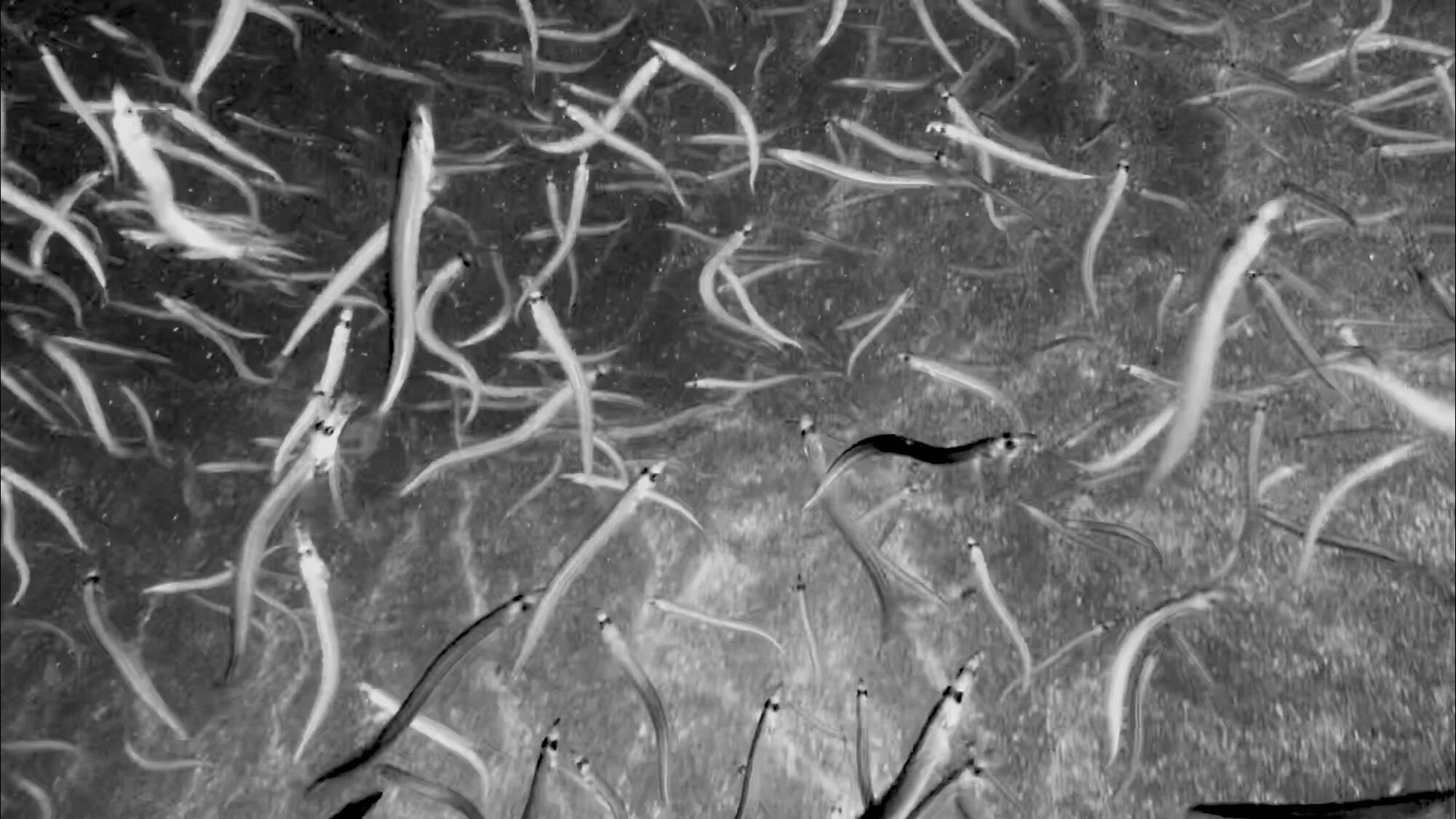By Sarah Teman
How do you conduct research on tiny, elusive fish that live hundreds of feet below the surface, burrow under the sandy seafloor, and are only half the size of a dollar bill? Like any challenge in marine biology, when there’s a will, there’s a wave.
A recent paper published in Fisheries Research describes how a submersible and an autonomous stereo-camera array were used to assess subtidal sand lance habitat. View the full citation and list of authors below this article.
In 2018, SeaDoc and OceanGate worked together to bring a submersible to the San Juan Islands for researchers needing such a platform for their work. The 2018 sand lance project was led by Gary Greene of the Tombolo Mapping Laboratory.
A team of scientists from the Alaska Fisheries Science Center, University of Washington, Moss Landing Laboratories, and Tombolo Mapping Lab was awarded sub time to study the very important forage fish. Forage fish are small schooling fish that convert plankton into fat. They’re important food items for larger predators. Specifically, these scientists wanted to know if they could use a sub to monitor and measure Pacific sand lance (Ammodytes personatus), or PSL for short (not to be confused with the famous fall beverage, the pumpkin spice latte).
PSL and other forage fish feed fish ranging from salmon to lingcod, diving marine birds, and marine mammals like seals, sea lions and minke whales. They don’t have a swim bladder so they can’t be seen on depth sounders, they burrow into the sand and hide when not feeding and they have a small, slender frame; all making it difficult for scientists to find them, let alone study them. How do you protect and conserve a species that is hard to even see?
The sand lance team, led by Dr. Matt Baker, found that cameras attached to submarines can effectively measure PSL abundance and behavior. They fixed a high-tech stereocamera array to OceanGate’s manned submersible, the OceanGate Cyclops I, and descended hundreds of feet below the water to study these fish in the darkness of the sea.
Once they reached the sandy seafloor, they turned on strobe lights and watched as PSL emerged from the sand waves and ascended into the water column by the thousands. Using the cameras, the team was able to record PSL size, movement, and behavior, and how these factors varied according to the physical characteristics of the seafloor. This is vastly different from other common methods to study deep-water fish, like acoustic imaging, trawls, or grabs. Acoustic surveys are best employed when looking for fish with gas-filled swim bladders, which reflect echoes and make fish easy to find. Because PSL lack swim bladders, it’s hard to get an acoustic read on them. Trawls and grabs are subject to selection bias and may not represent the population at large. Spying on fish using cameras on submarines, on the other hand, is highly effective, but cost intensive. Likely a combination of different survey methods will optimize our efforts to study cryptic species like the PSL.
Using science to understand the habits of important species like Pacific sand lance is the first step in protecting them. SeaDoc supporters make research like this possible and we couldn’t do the work we do without them.
Citation:
Baker, M. R., K. Williams, H.G. Greene, C. Greufe, H. Lopes, J. Aschoff, R. Towler. 2021. Use of manned submersible and autonomous stereo-camera array to assess forage fish and associated subtidal habitat. Fisheries Research. https://doi.org/10.1016/j.fishres.2021.106067.

